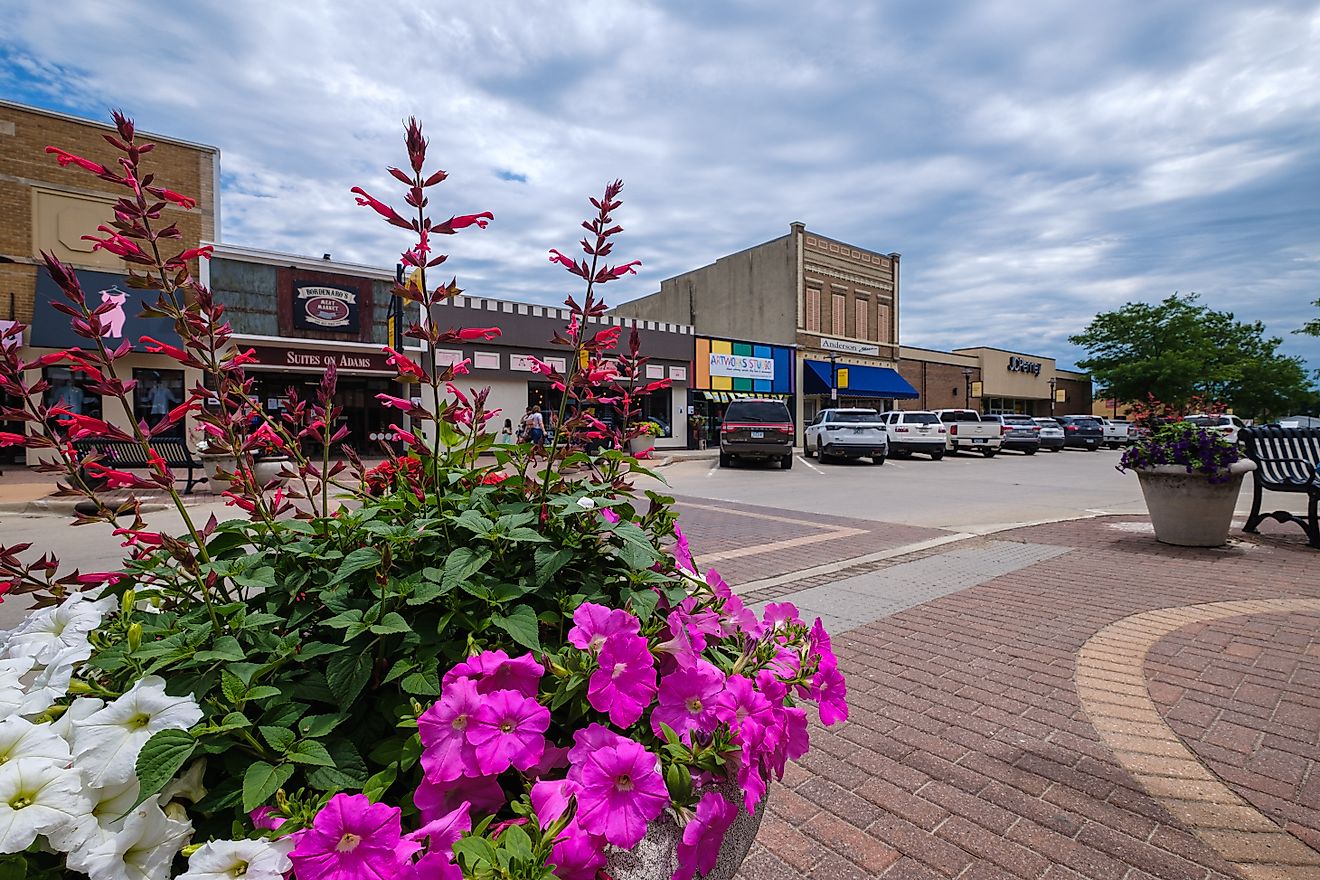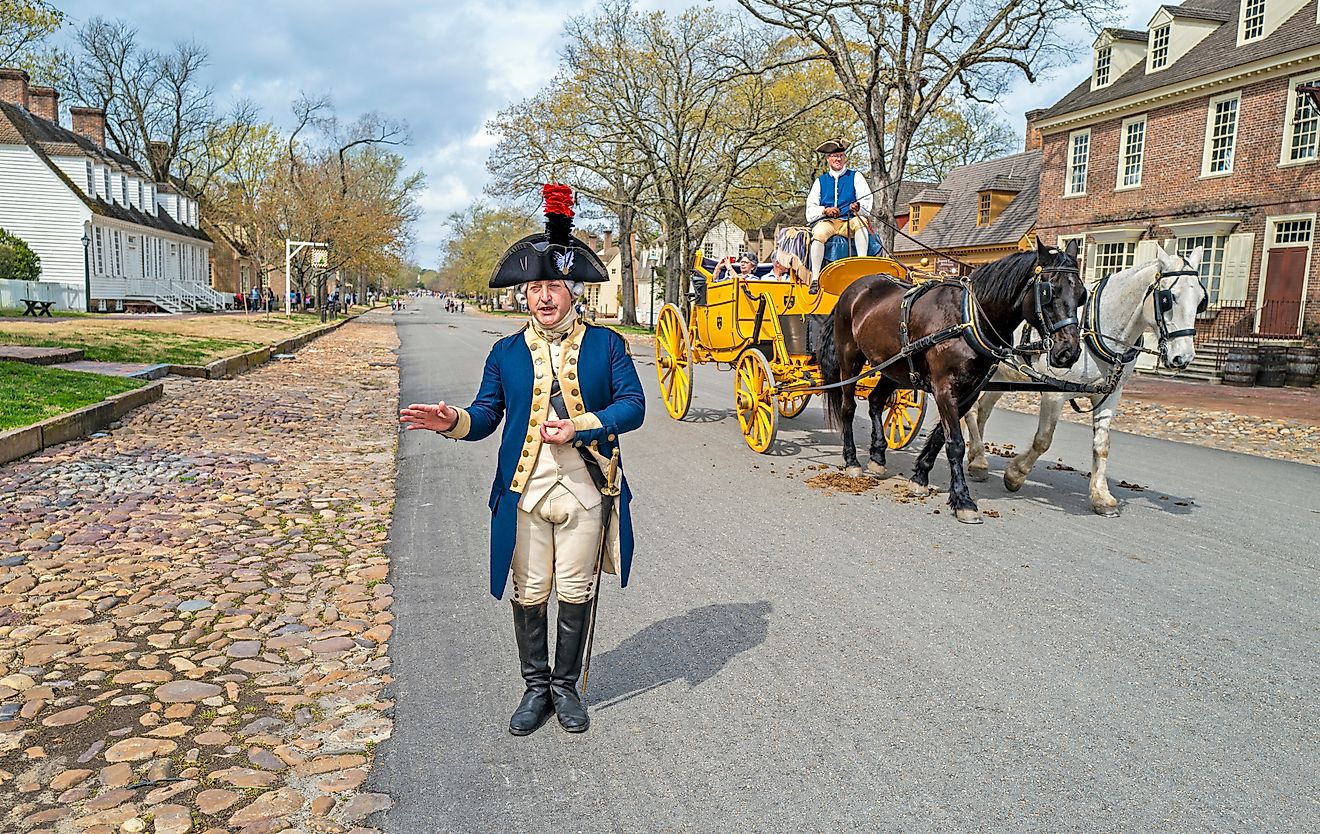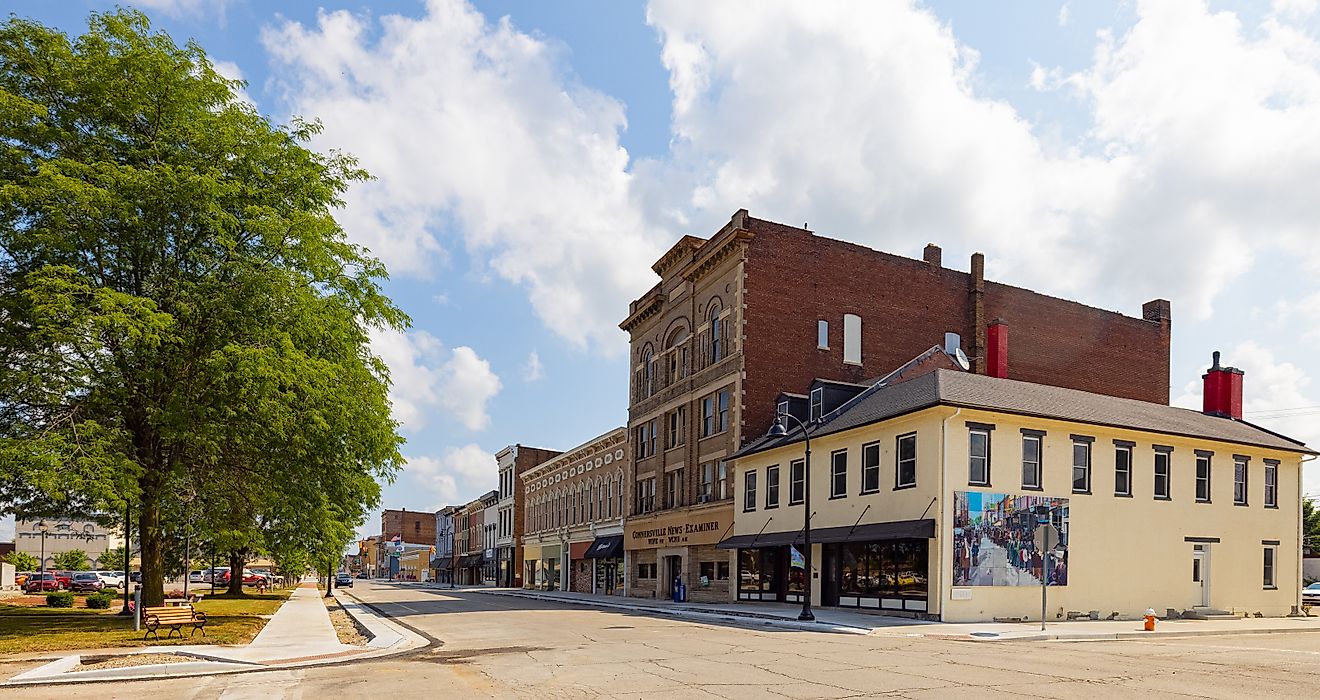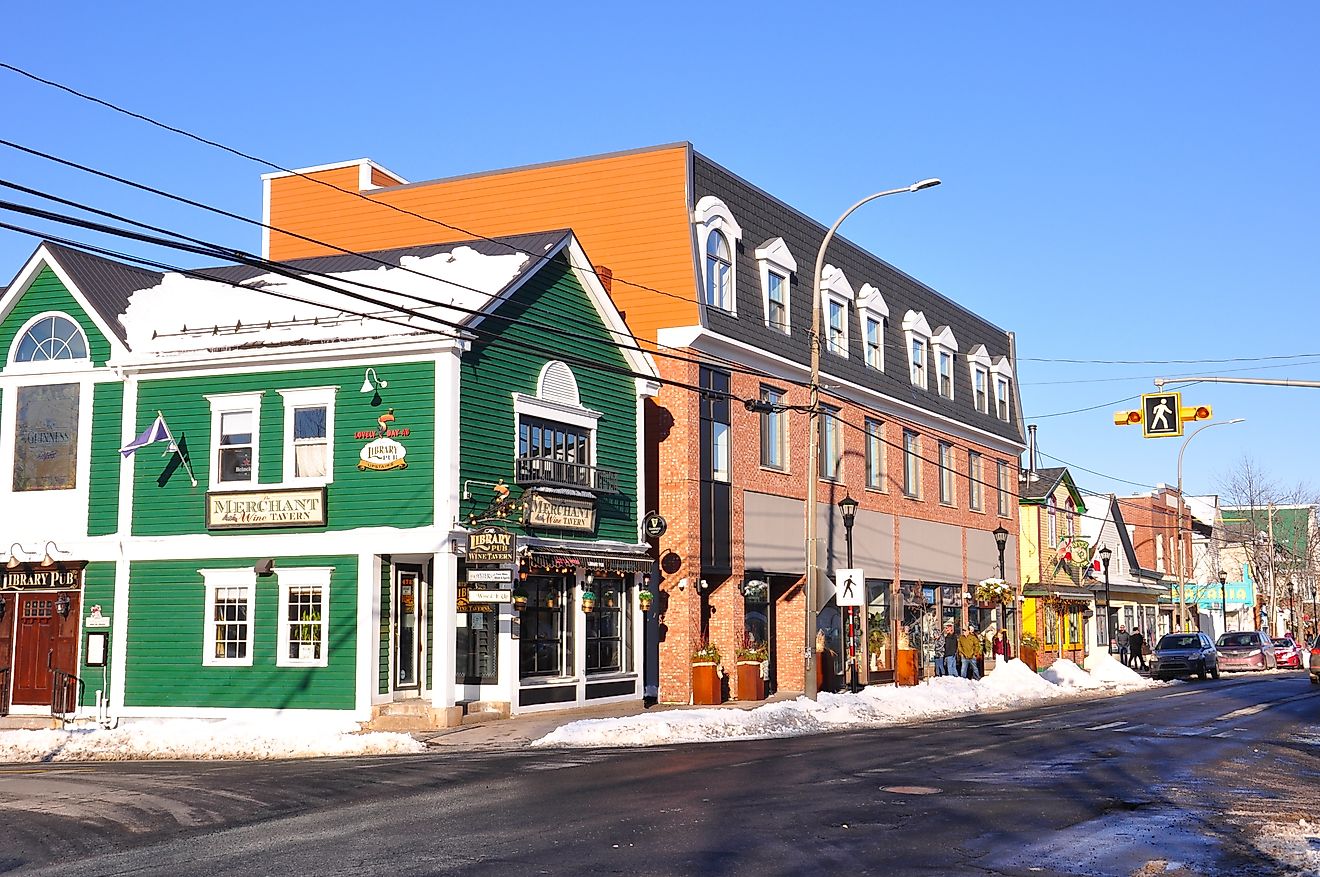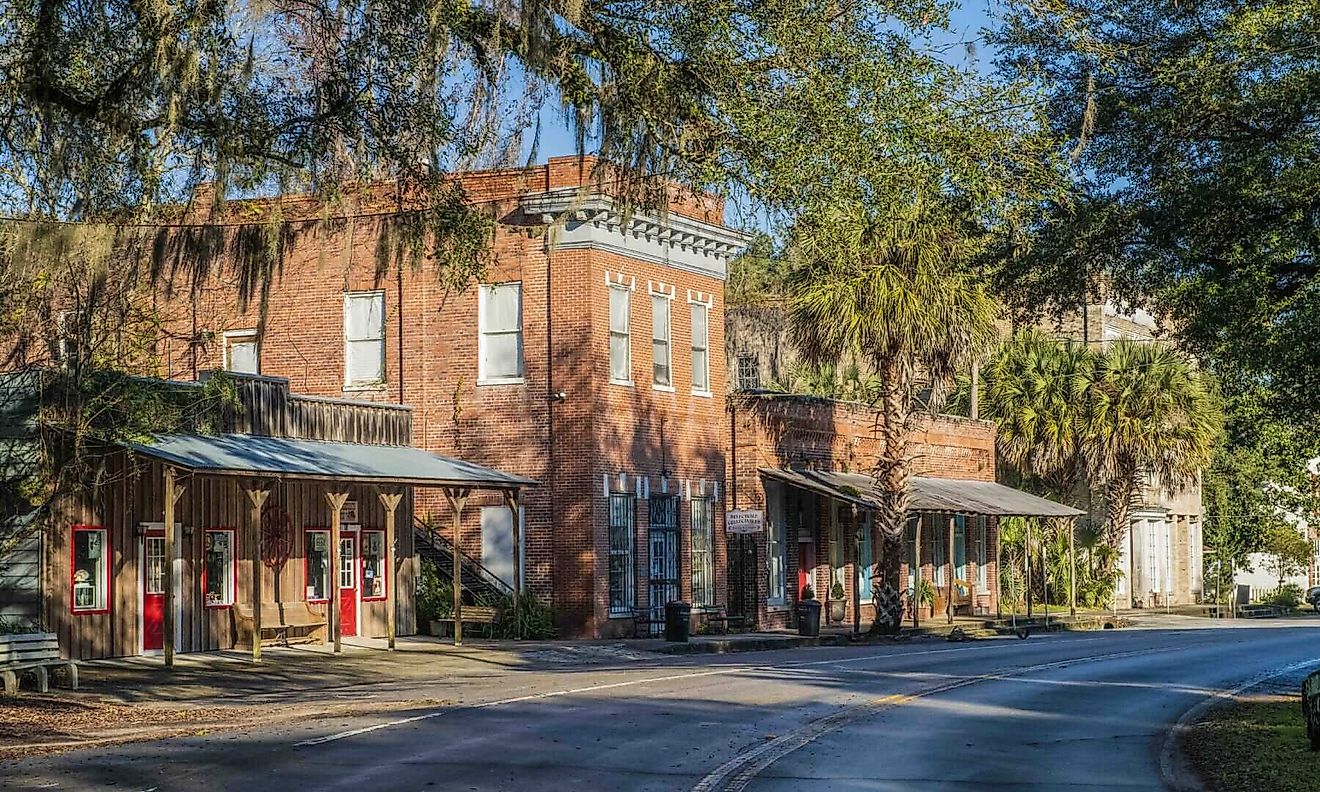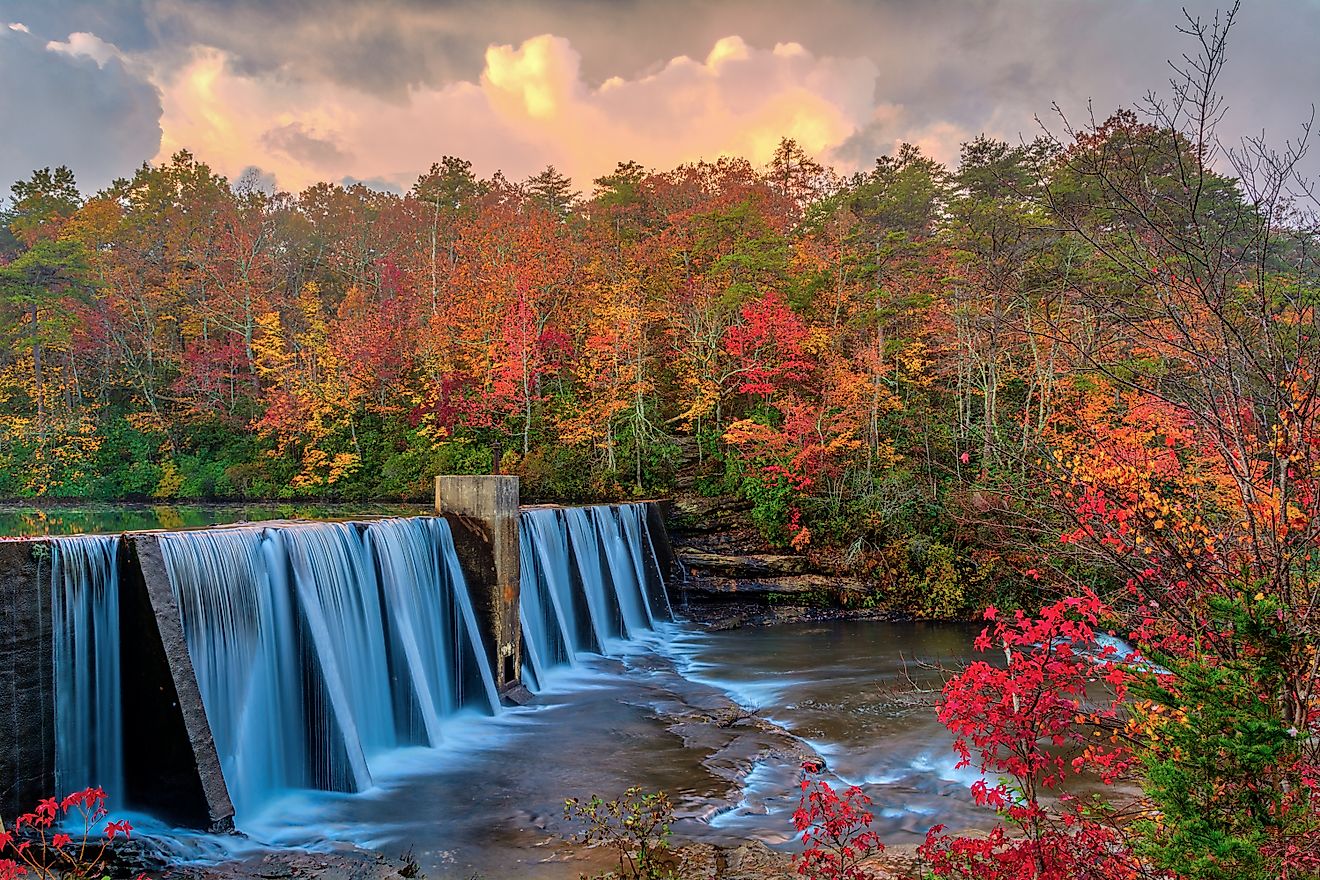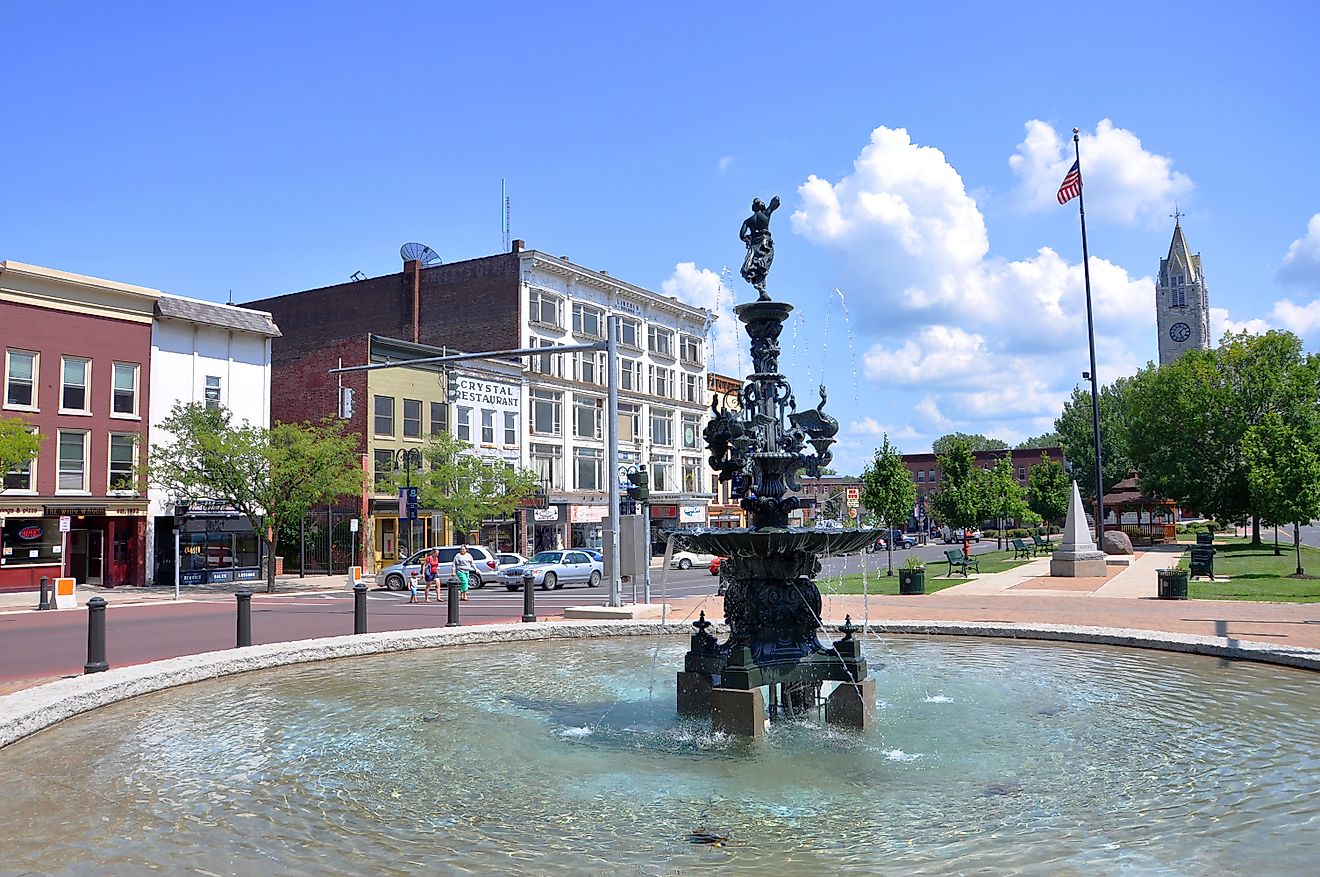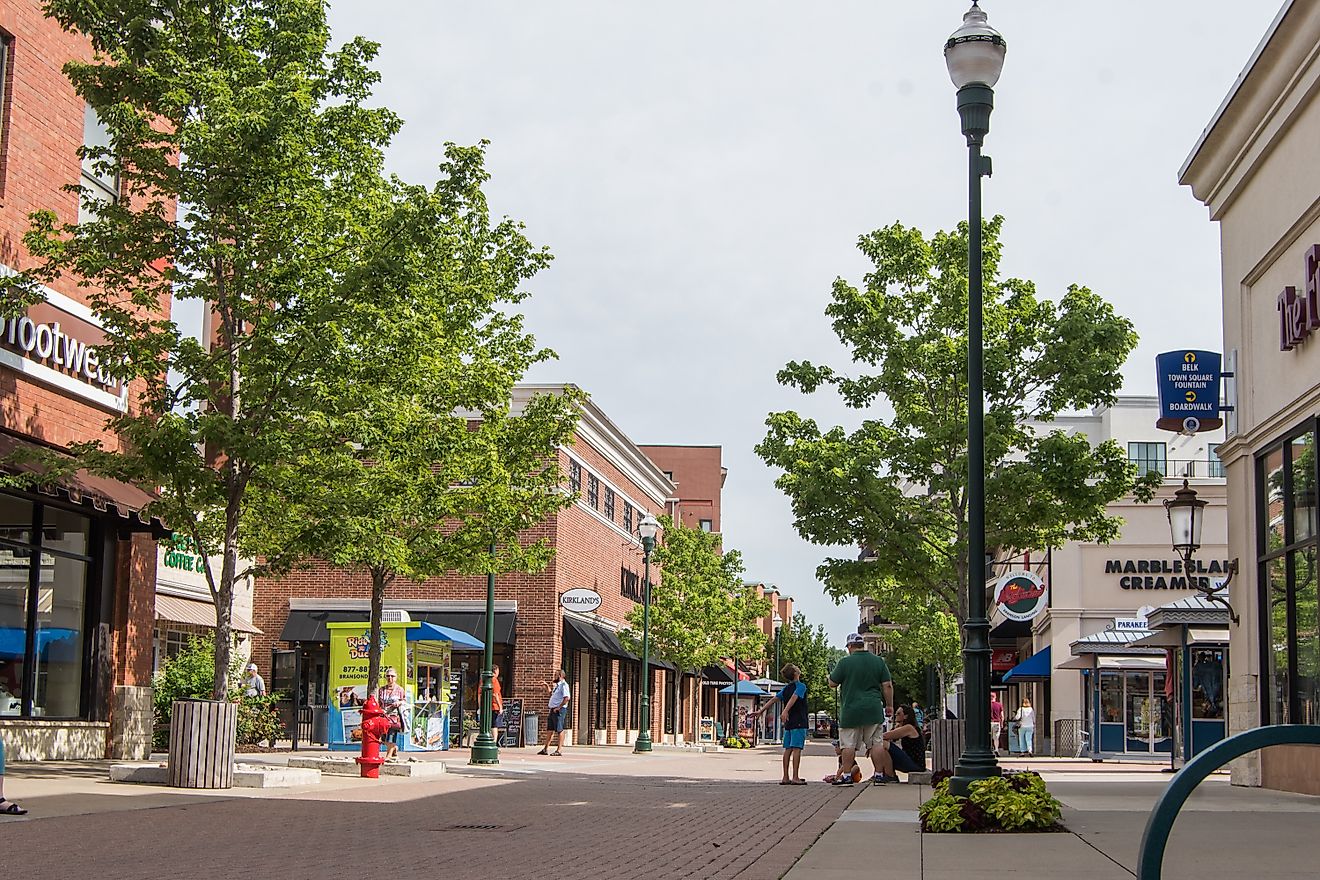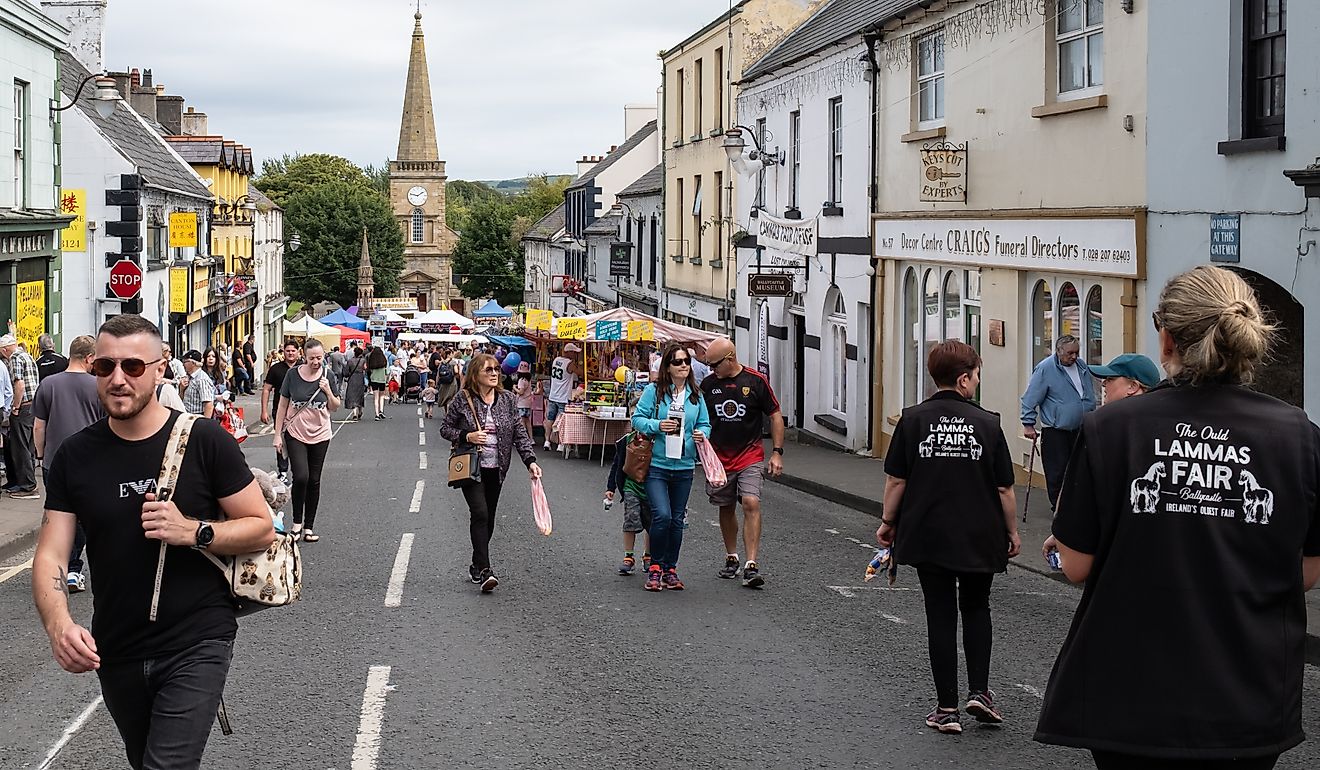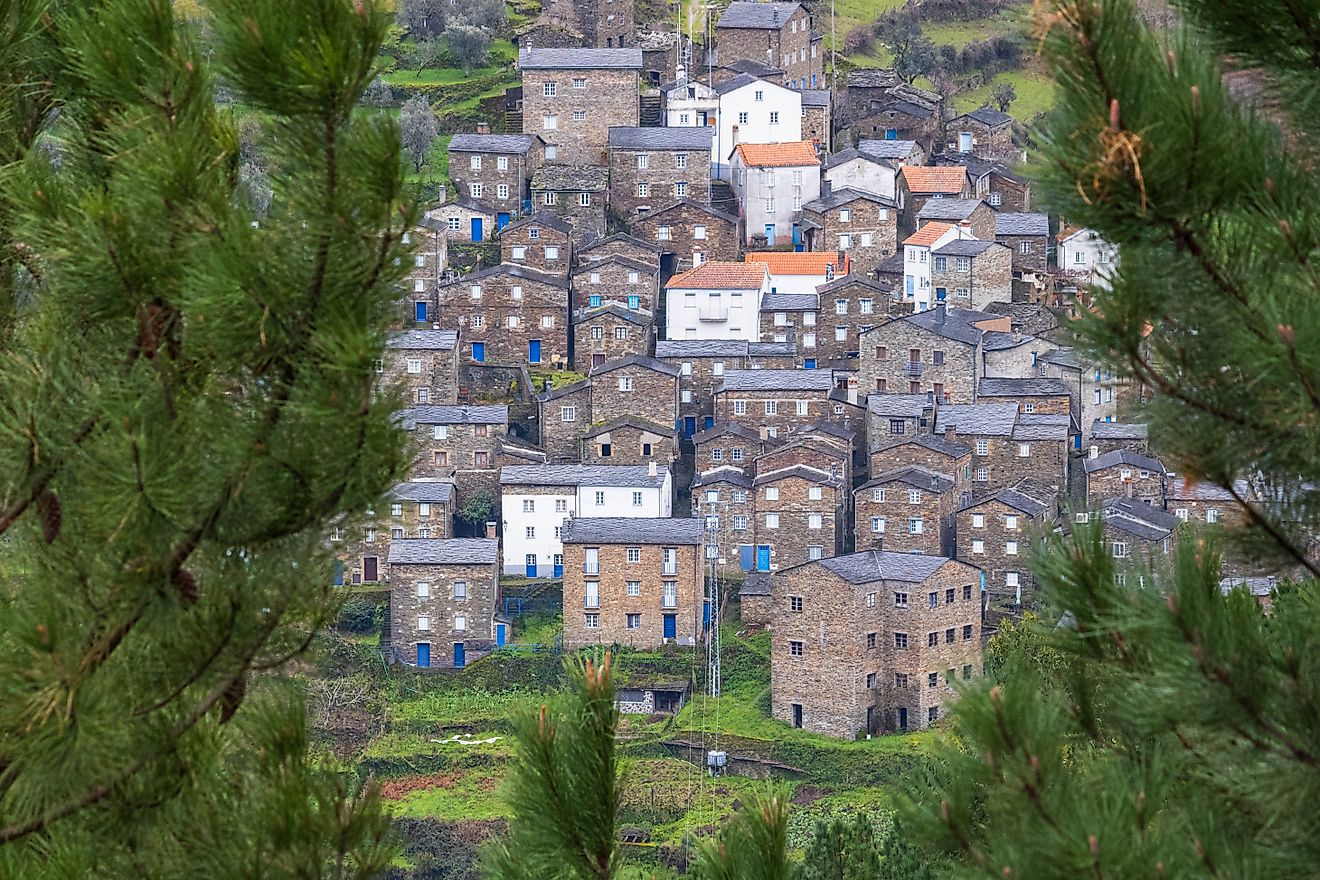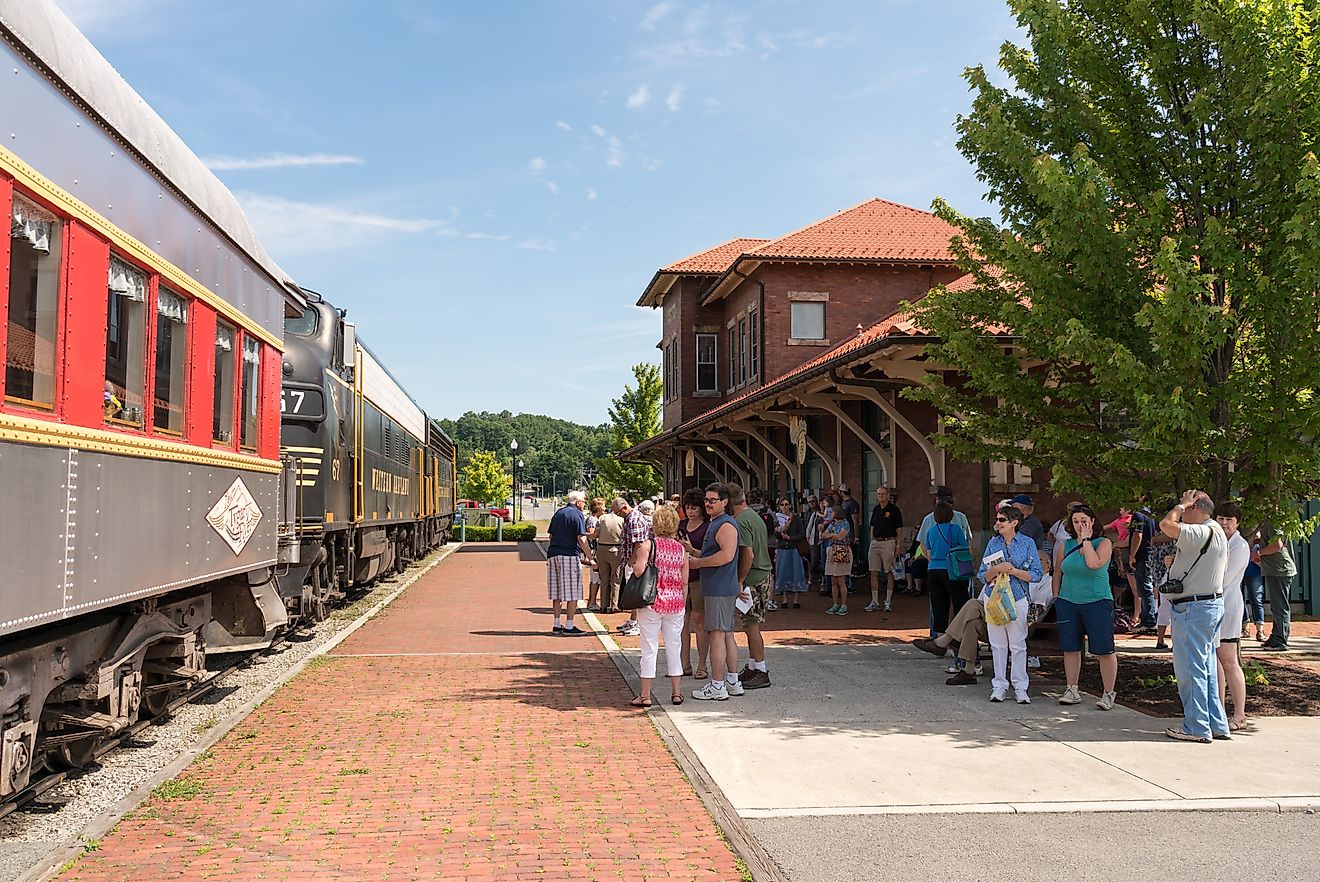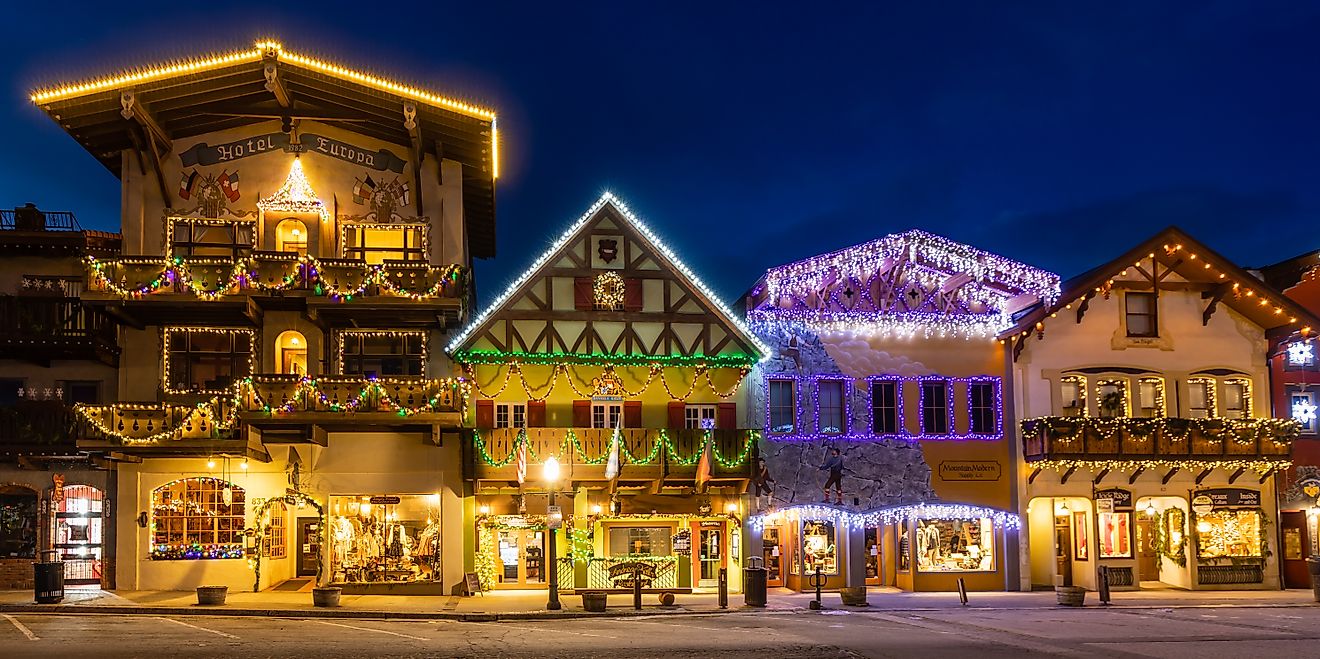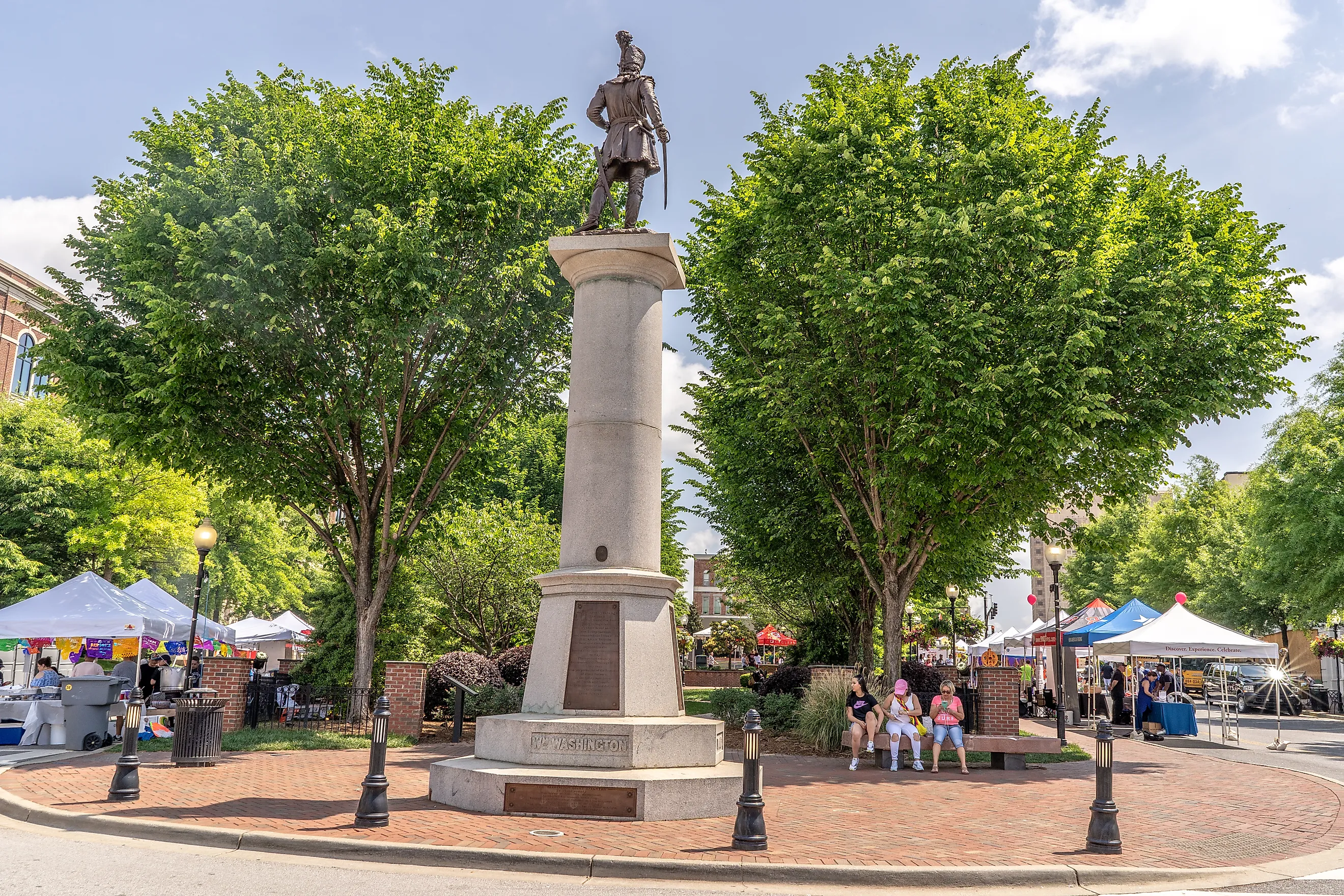
10 Most Charming Town Squares In South Carolina
Judge a South Carolina town by its square. If the courthouse steps can host a protest at noon and a wedding at dusk without moving a single pickup, you’ve found the state at street level. From granite-ringed upcountry greens to Lowcountry waterfront promenades where shrimp boats nose into view of café tables, these squares aren’t ornaments; they’re operating systems.
To choose the ten most charming, we weighted year-round function over festival gloss and favored buildings doing what they were built to do. Expect opera houses that still book acts, town clocks that still keep time, and riverwalks that still smell like salt. Here’s where South Carolina keeps its center of gravity.
Abbeville
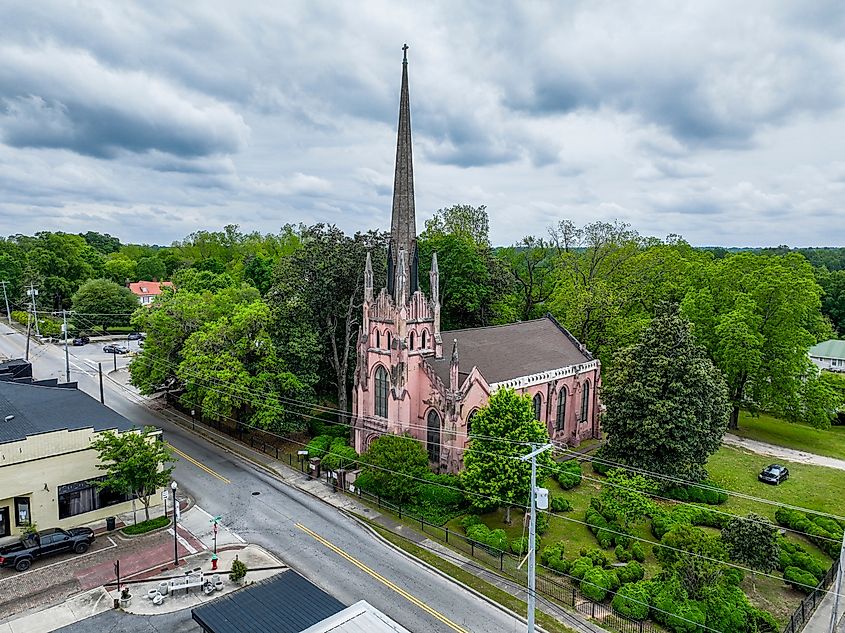
Abbeville’s claim to fame isn’t loud or obvious; it’s underfoot. Court Square is paved in pink granite that gives the downtown its signature hue. This kind of understated distinction fits Abbeville’s personality: it doesn’t try to impress, but it lingers in the memory. The centerpiece is Court Square, anchored by the historic Belmont Inn and the century-old Opera House, where a full slate of performances continues year-round. Just across the square, the 1903 Abbeville County Courthouse and its Romanesque dome set the tone for a square built with symmetry, civic pride, and permanence.
Start with coffee and a biscuit at Divine Your Space, a hybrid café, bookshop, and art gallery just off the square. Then walk to the Burt-Stark Mansion, where Jefferson Davis held his final war council in 1865. At Trinity Episcopal Church, you’ll find one of South Carolina’s oldest pipe organs and a tower built with ballast bricks from Charleston shipping vessels. For dinner, Main Street’s Indigenous Underground offers Lowcountry-inspired dishes like fried green tomato Napoleon with remoulade.
Aiken
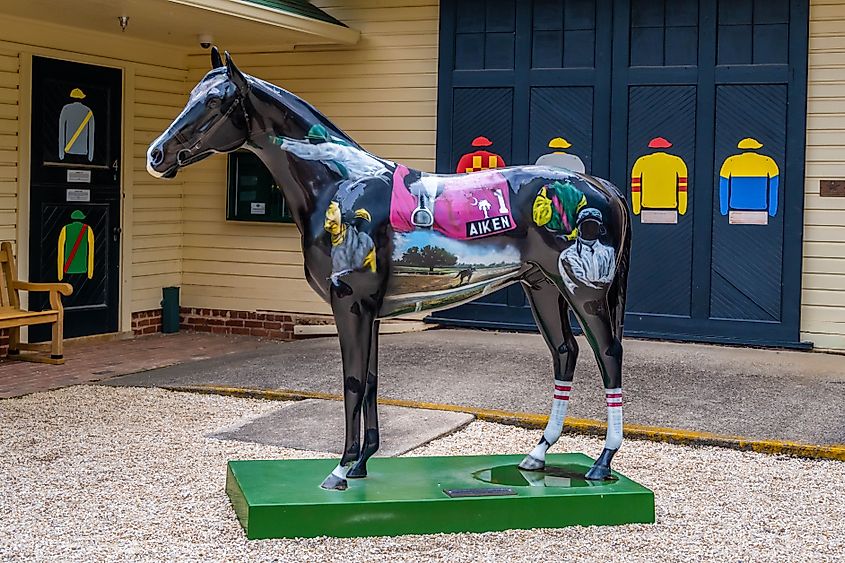
The defining feature of Aiken isn’t a structure, it’s a sound: the echo of hooves on sand-clay roads. Once a winter playground for Gilded Age families like the Vanderbilts and Astors, Aiken still leans into its equestrian identity with daily riders crossing downtown intersections. Laurens Street serves as the town’s core, but the real pulse is found in The Alley: a narrow pedestrian corridor lined with brick, strung lights, and a concentration of restaurants and live music venues. The city’s street grid includes wide parkways, originally designed for carriages, and remains lined with live oaks and magnolias.
Hitchcock Woods, one of the largest urban forests in the country, begins less than a mile from downtown. Its sandy trails weave through 2,000 acres of pine barrens and wiregrass, ideal for long walks or fox hunting events. At New Moon Café, regulars linger over pimento cheese toast and carrot cake muffins. The Aiken County Historical Museum, housed in a former Winter Colony mansion called Banksia, covers everything from the town’s polo heritage to its role in the Savannah River Site project. Dinner at Whiskey Alley, with its bourbon-heavy bar and duck confit tacos, rounds out a town that balances old South formality with a working-town edge.
Beaufort
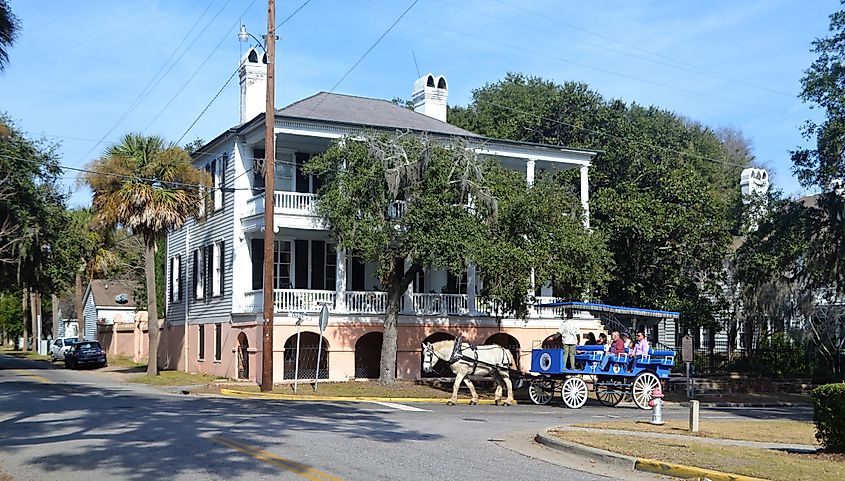
Beaufort’s waterfront is shaped less by design than by tide. Built on Port Royal Island with streets that tilt toward the river, the town’s core seems to lean into Battery Creek. Unlike its coastal neighbors, Beaufort never outgrew its colonial footprint. It’s the second-oldest city in South Carolina, and the Historic District, spread across Bay Street and Craven Street, includes more than 300 antebellum buildings, most still in residential use. The Henry C. Chambers Waterfront Park, built in the 1970s where canneries and docks once stood, acts as the town square, with swings, palmettos, and benches facing the Intracoastal Waterway.
City Java & News inside the historic City Loft Hotel serves as the de facto morning hub, especially for shrimpers and retirees. Across the park, the Beaufort History Museum inside the 1798 Arsenal building covers topics from Reconstruction politics to local Gullah traditions. At Plums on Bay Street, lunch means a fried oyster po’ boy with red rice, and nearly every seat has a view of the marsh. Carriage tours begin at the marina and pass landmarks like the John Mark Verdier House and The Point, where The Big Chill and Forrest Gump filmed.
Cheraw
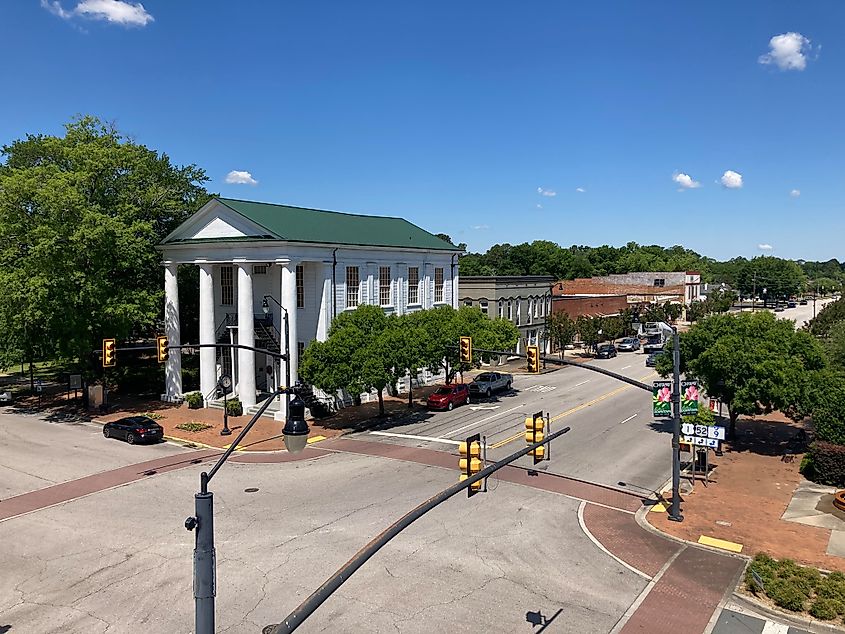
Cheraw is built around a rhythm, sometimes literal. It’s the birthplace of jazz trumpeter Dizzy Gillespie, whose likeness appears in a bronze statue on the Town Green, trumpet raised mid-note. The grid around Market Street still follows a colonial-era plan laid out by French Huguenots in the 18th century. The square itself remains the focal point, framed by storefronts that still display cast-iron facades and tin ceilings. The Lyceum Museum, in an 1820s classical-style building, anchors one corner and houses exhibits on the town’s Revolutionary War role and early commerce on the Pee Dee River.
At The River’s Edge, a short walk from the square, diners order catfish Reubens and fried pickles overlooking the water. The Dizzy Gillespie Home Site, marked by a wrought iron gate and granite marker on Huger Street, draws jazz devotees, especially during the town’s annual fall jazz festival. Broad Street's Old St. David’s Church, once used as a hospital during both the Revolutionary and Civil Wars, is South Carolina’s oldest Anglican church building still standing. Across from the square, The River’s Edge serves plates of fried flounder, hushpuppies, and slaw with views of the Pee Dee River.
Georgetown
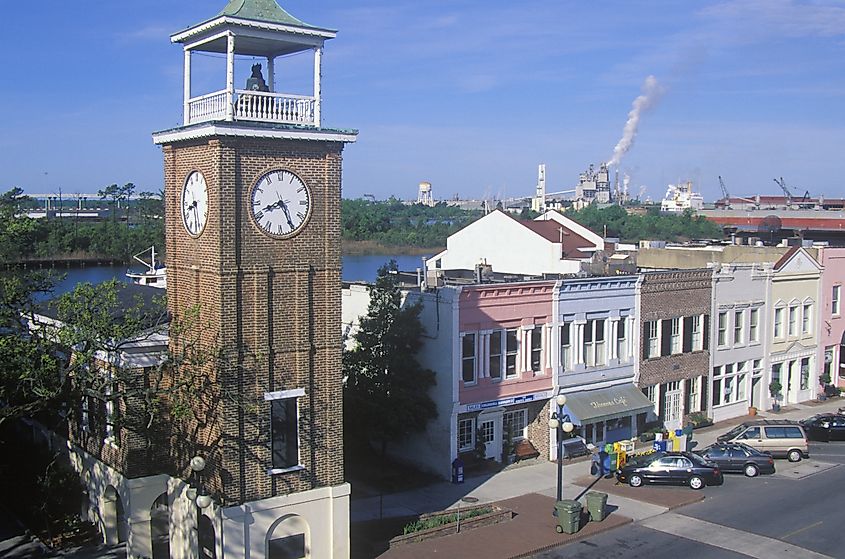
Georgetown operates in layers. Beneath the streets of its historic downtown are old rice wharves, now buried under reclaimed land and pavement. The town grew from one of the South’s wealthiest rice ports into a low-slung district of warehouses, churches, and inns fronting Winyah Bay. Front Street runs parallel to the water and serves as the spine of Georgetown’s commercial core, but the harbor-facing Harborwalk is what defines its layout. Shrimp boats dock within steps of boutiques, and pelicans compete with charter captains for vantage points along the piers.
The Rice Museum, housed in the old Town Clock building, outlines Georgetown’s 18th-century economic rise through indigo and rice. Down the boardwalk, Big Tuna Raw Bar draws steady traffic for hushpuppies and baskets of grilled mahi, often served on paper-lined trays overlooking the water. The Kaminski House Museum, built in 1769, opens onto a lawn used for concerts and oyster roasts. Beyond the harbor, the convergence of five rivers makes Georgetown a launch point for inland eco-tours.
Greenwood
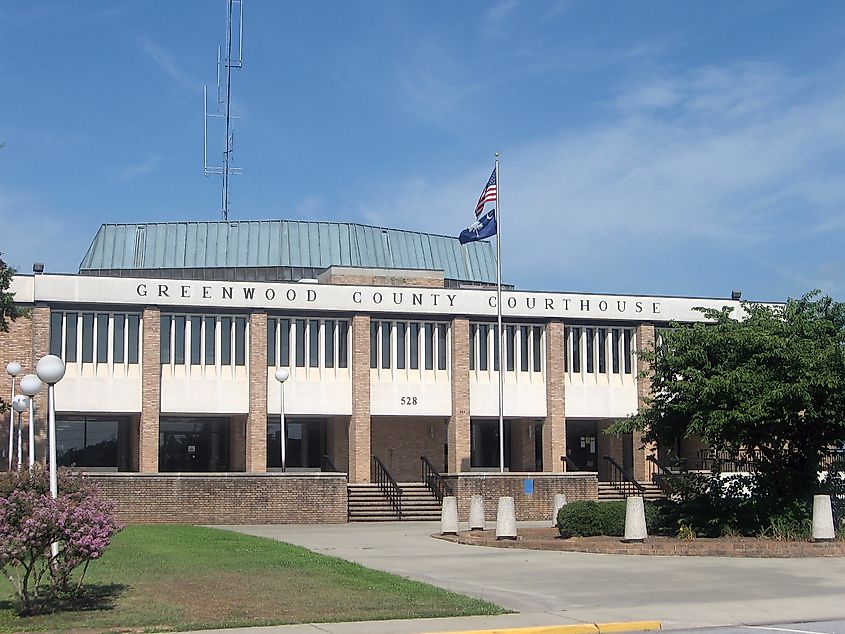
Greenwood’s downtown runs wider than most towns its size. That’s intentional. The town square, known locally as Uptown, was designed with broad medians to accommodate 19th-century train tracks that once ran straight through Main Street. Today, the old railbed is a linear park flanked by public art, seating areas, and a splash pad that operates in the summer. Greenwood’s Festival of Flowers, launched in 1968, still places life-size topiary sculptures throughout the square every June, including giraffes, elephants, and butterflies formed from steel frames and thousands of live plants.
The Arts Center of Greenwood occupies the former Federal Building and rotates exhibits from regional artists in two upstairs galleries. The Museum, just across the plaza, houses artifacts from Cokesbury College and a preserved 1950s-era classroom. Kickoff mornings at West End Café, known for its sausage biscuits and conversation across tables. For dinner, Montague’s Restaurant on Bypass 72 serves ribeye with a loaded baked potato under a pressed tin ceiling. Railroad Historical Center, a few blocks from Uptown, offers weekend tours of restored 20th-century train cars, including a Pullman sleeper and a Southern Railway dining car.
Laurens
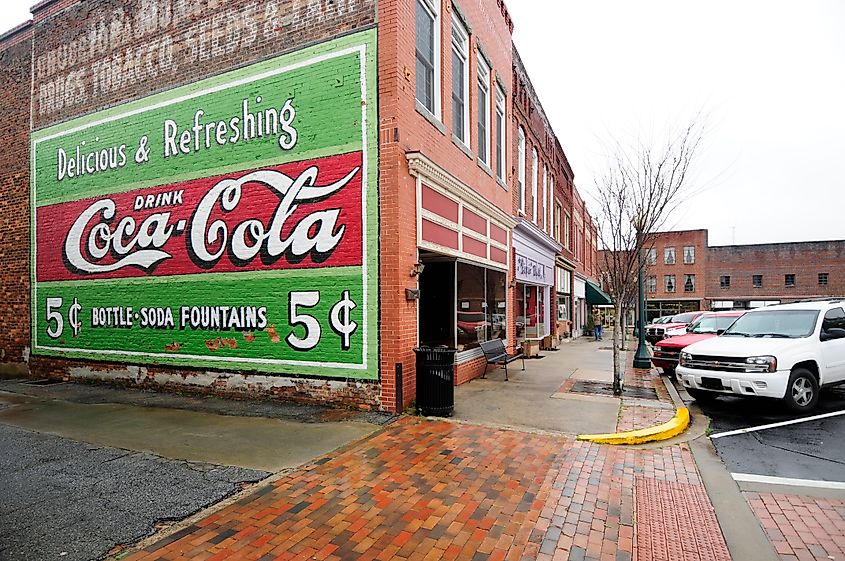
Laurens centers itself with symmetry. The courthouse, a 1911 Classical Revival structure with a copper dome and limestone façade, stands directly in the middle of the square, encircled by a rotary of one-way traffic and brick commercial buildings. This configuration, rare in South Carolina, makes the square feel closed, self-contained. Laurens was named for Henry Laurens, a former president of the Continental Congress, and the layout still reflects early ideals of civic order. The town’s compact grid radiates outward, but the square remains the working and cultural anchor.
The Laurens County Museum on West Main displays everything from Revolutionary War powder horns to an 1890s fire wagon. Around the corner, Rootimentary serves meat-and-three lunch plates and shrimp-and-grits at dinner inside a restored 1950s warehouse. Verdin’s Too, a garden shop turned bar and grill, operates on a shaded terrace across from the courthouse and draws a weekend crowd for bluegrass and pulled pork. The Capitol Theatre, reopened in the shell of a 1926 cinema, hosts concerts, trivia, and independent films. Laurens doesn’t chase nostalgia, it repurposes what it has.
Newberry
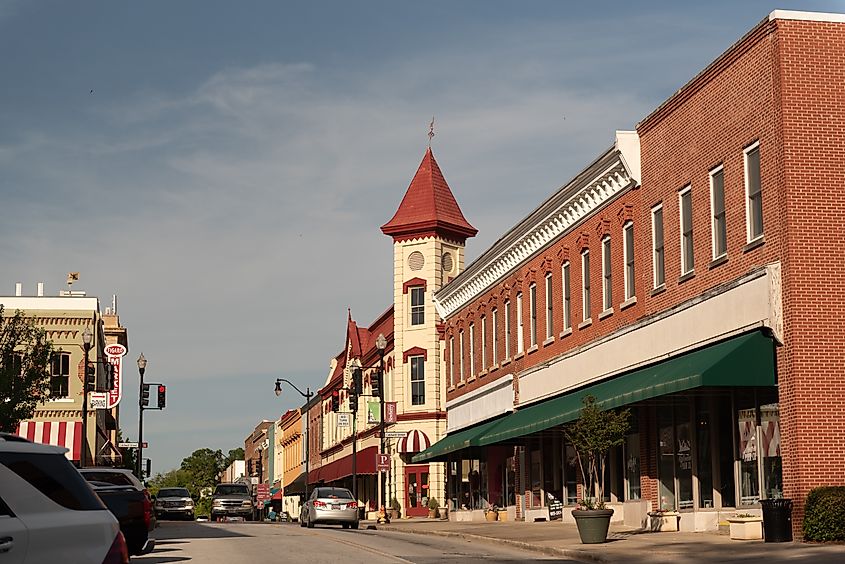
Newberry’s downtown remains scaled to a different era. The Newberry Opera House, completed in 1882 with a French Gothic clock tower and slate roof, was originally designed to double as city hall and jail. It now anchors the square with a full season of national and regional acts. The surrounding streets hold their original curvature, built to accommodate wagons, not cars. Newberry avoided the strip mall sprawl that hollowed out similar towns, and its commercial buildings still hold tenants, law firms, boutiques, cafés, without resorting to pastiche.
The square’s daily rhythm starts at Half Full, a wine bar and lunch spot on Caldwell Street, known for its BLTs on sourdough and rotating quiches. A block away, the Newberry Arts Center hosts classes and exhibits in a repurposed department store. Memorial Park, a compact green space with a war monument and bandstand, sits at the southern end of the square and serves as the site of concerts, car shows, and Christmas markets. For dinner, Figaro The Dining Room offers crab cakes and pecan pie in a former bank with marble columns and vault doors still intact.
Pendleton

Pendleton’s town square is one of the oldest continuously used public spaces in South Carolina. First laid out in 1790, the square centers around a grassy green anchored by the Farmers Society Hall, a white-columned building once used by Thomas Clemson and John C. Calhoun. Unlike other towns that paved over their commons, Pendleton preserved the open space. Roads wrap around rather than through it. Oaks, benches, and a flagpole frame the square, and businesses operate in original 19th-century buildings with minimal alteration.
At 1826 Bistro, diners order shrimp and grits or grilled trout inside a converted general store. Across the square, Mountain Made stocks pottery and crafts from Appalachian artisans. Ashtabula Plantation, a mile outside town, offers guided tours through a two-story clapboard house once positioned along a major stagecoach route. Woodburn, another preserved plantation nearby, holds living history days and open-hearth cooking events in its detached kitchen. On weekends, the Village Bakery draws a line for sourdough and cinnamon twists before 9 a.m. Pendleton functions without spectacle.
Spartanburg
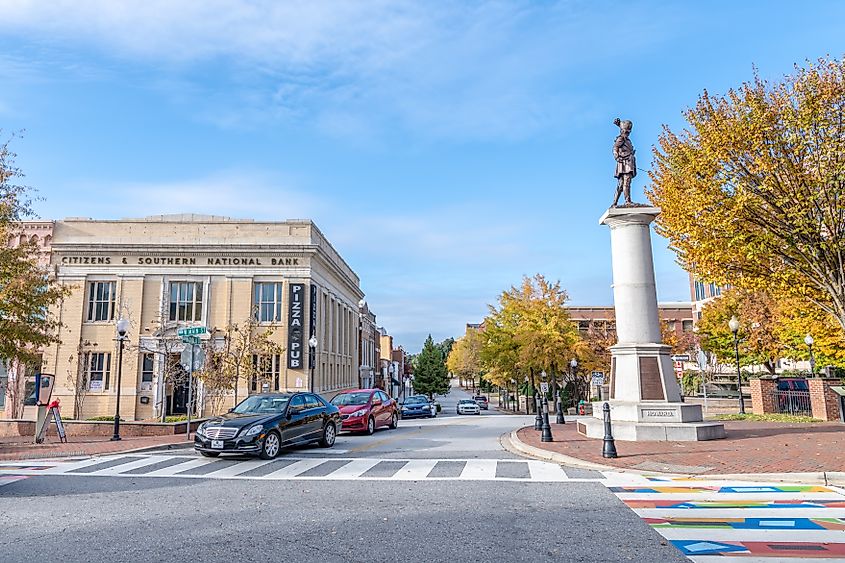
Spartanburg’s center holds a shape that many Southern towns lost: the traditional square. Known as Morgan Square, it dates to the late 1700s and was once a gathering point for militia regiments during the American Revolution. Today it functions as a public space flanked by preserved commercial blocks and a statue of Revolutionary War hero Daniel Morgan. Unlike surrounding development, the square wasn’t widened or rerouted for traffic. That preservation anchors a growing downtown that has added density without sacrificing form.
The Chapman Cultural Center, five blocks from the square, houses the Spartanburg Art Museum, Ballet Spartanburg, and a science center under one roof. Around Morgan Square, Fr8yard serves smoked brisket sandwiches and local beer in a two-story open-air shipping container structure that includes live music on weekends. The Rail Trail, starting just south of downtown, links several neighborhoods and connects to the Mary Black Foundation Rail Trail Dog Park and the Hub City Farmers Market. For coffee, Little River Roasting’s flagship café on Broad Street operates out of a former furniture store and roasts on-site.
South Carolina’s most charming squares prove that place still governs pace. Each one anchors daily life with benches, bells, bakeries, and background, the Four-B test this list relies on. Whether granite-strong upstate greens or tidal waterfronts, these centers work year-round: courts in session, opera houses booked, riders crossing alleys, shrimp boats easing past café tables. Choose any square and you’ll find the state’s measure of community: durable and built for gathering.
